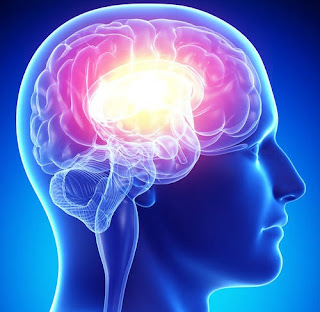Effect Of Deep Brain Stimulation In Parkinson’s Disease - Dr. Vikas Kathuria
Introduction
Parkinson’s disease is chronic and progressive and reduces the quality of life. It causes low confidence and embarrassment in public life. The patient goes into isolation resulting in depression. There is no cure for this condition. Medications help in managing the symptoms. However, in severe cases, medications fail to provide adequate relief to the patients. In such cases, neurologists recommend the Deep Brain Simulation procedure.
Parkinson’s Disease
Parkinson’s disease is a progressive and chronic neurological condition. The patient experience loss of control over various body functions. The symptoms of this condition initiate mildly and progress to increase severity.
The symptoms of Parkinson’s disease are stiffness, shaking, tremor, and lack of coordination in movement. In severe form, the patient has trouble speaking and walking. The patient also has fatigue, memory loss, sleep disorders, and depression. It significantly affects the quality of life. Men are at increased risk for developing this condition than women. Most cases of Parkinson’s disease occur with advanced age. Only 5-10% of the patients experience early onset, i.e., before the age of 50. Some cases of early-onset are linked to hereditary.
Neurons are present in the brain. Some of these neurons secrete dopamine that controls the movement of the body. However, due to ageing, these neurons die, resulting in a low level of dopamine. It causes a lack of coordination in movement. The condition is known as Parkinson’s disease.
The doctor diagnoses the condition by evaluating the signs and symptoms of the patient, along with medical history. The doctor also recommends imaging tests such as MRI, CT scan, and dopamine transporter scan (DaTscan).
There is no way to cure the disease. However, doctors may prescribe medications that may help in managing the symptoms. The doctor may advise surgery in severe cases. Alternative treatments such as yoga, massage, and meditation may also help in reducing the severity of symptoms.
Deep Brain Stimulation
Doctors recommend Deep Brain Stimulation (DBS) procedure in patients with severe movement problems due to Parkinson’s disease. In this procedure, the doctor inserts the electrodes in specific areas of the brain. There are generally four areas where the surgeons may insert the electrodes. These are globus pallidus internus, subthalamic nucleus, thalamus, and the pedunculopontine nucleus. Selecting the correct target area is a tough task. The doctor evaluates the most bothering symptom, the current medications, and the underlying medical conditions before finalizing the target area to insert the electrodes. DBS provides significant relief from motor symptoms.
How Deep Brain Stimulation Therapy Works?
Doctors recommend Deep Brain Stimulation in conditions such as Parkinson’s disease, dystonia, essential tremor, epilepsy, and obsessive-compulsive disorder. The procedure is complex and carries risks. The risks are bleeding, stroke, infection, headache, seizures, and pain and swelling at the implantation site.
There are three parts of a deep brain stimulator. These are the pulse generator, the extension, and the lead. The surgeon fits the pulse generator near the clavicle bone. The pulse generator generates the electrical impulses that reach the electrodes through the wire. These impulses control the activity of the brain.
Surgeons implants the leads along with the electrodes at the target areas of the brain. The wire connects the electrodes with the pulse generator. Deep Brain Stimulation functions like the pacemaker of the heart.
People who are unable to have relief from the medications or who cannot tolerate the medications are the right candidates for this procedure.
What Are The Benefits Of Deep Brain Stimulation Therapy?
There are various benefits of the Deep Brain Stimulation procedure. These are:
- Regulatory approved procedure: The Deep Brain Stimulation procedure is approved by various regulatory authorities such as USFDA. Apart from Parkinson’s, DBS is authorized to treat essential tremor, dystonia, obsessive-compulsive disorder, and epilepsy.
- Advanced procedure: DBS procedure is an advanced treatment option that improves the overall quality of life of the patient.
- Effective: DBS procedure is quite effective. Approximately 85% of people experience a significant reduction in their Parkinson’s symptoms.
- Improves quality of life: DBS improves the quality of life. People began to experience confidence in the public after undergoing DBS. Further, they are less dependent on others for performing daily activities.
- Reduce the dose of medications: The initial treatment of Parkinson’s disease is medications. As the conditions progress, the doctor either adds the medications or increases the dose of current medications. However, these medications have side effects. DBS helps in reducing the dose of medications and lowers side effects.
- Adjustable: The DBS is adjustable. As the disease progresses, the surgeon can adjust the strength of impulse without the need for further surgery.
- Reversible: DBS procedure is reversible. If the patient does not require DBS, the surgeon can either cut-off the impulse or remove the complete device.
Conclusion
The deep Brain Stimulation procedure helps in reducing or preventing movement disorders in patients with various neurological conditions. It involves the insertion of electrodes at specific targets in the brain. The pulse generator generates impulses that help in controlling brain activity.
Tag = Deep Brain Stimulation In Gurgaon, Neurosurgeon Doctor In Gurgaon, Best Neurologist in Gurgaon, Spine Surgeon In Gurgaon
For More Information http://bit.ly/Deep-Brain-Stimulation-In-Gurgaon
PDF Submission = https://issuu.com/bestneurologistingurgaon/docs/deep_brain_stimulation_in_gurgaon



Comments
Post a Comment